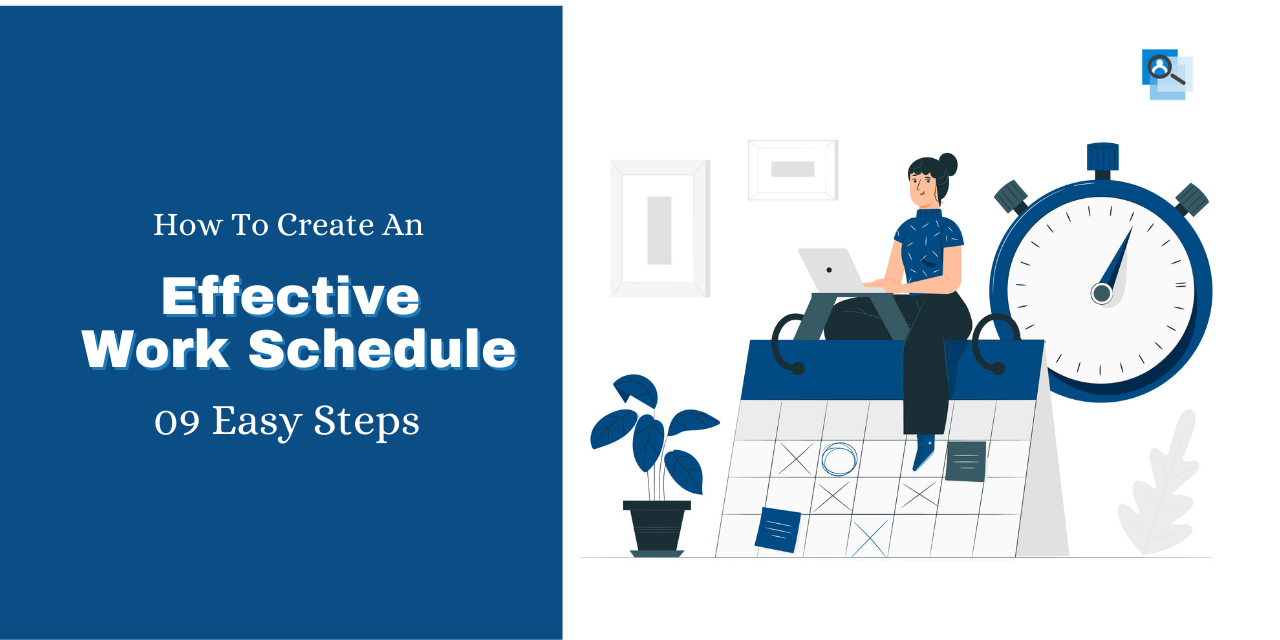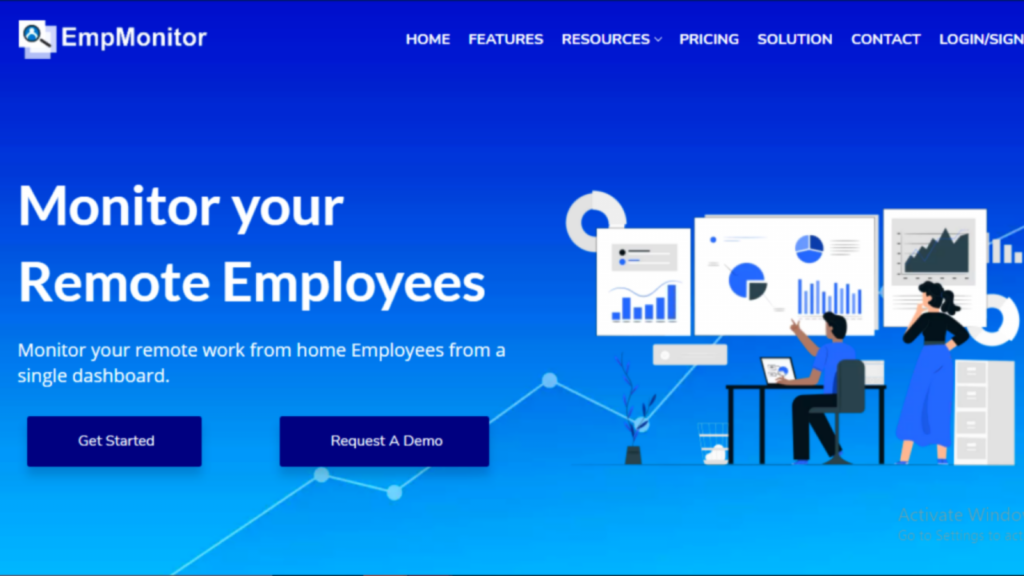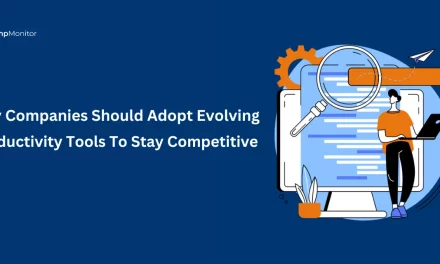An excellent work schedule is something that every manager desire. Unfortunately, it is not that simple when it comes to achieving in reality. Even though technology makes streamlining the process easier and getting it right the first time. For managers, creating an employee work schedule target that makes everyone happy is sometimes an impossible puzzle.
On any scale of organizations with variable shifts, developing a weekly work schedule target is a major headache for managers. Creating a balance between the needs of the business, the needs of employees, and forging a streamlined process for successfully scheduling business is no small feat.
Even though it is daunting and stressful, this is an essential and critical element to creating a positive and productive workplace. If you supervise a team that works on an hourly basis, you might already know that there’s a lot of behind-the-scenes goes on for planning a successful work schedule.
Hit The Play Button To Listen To The Podcast:
Maybe you have already conquered the art of work schedule, and if so, Great! If not, and you’re desperate for scheduling tools to make things run more smoothly, this guide will provide you with some best practices that you can adapt and fine-tune for your own business.
What Is an Employee Work Schedule?
A work schedule is a time when an employee is expected to be on the job and start working. A set of days and hours per week is determined by the employer. It is not regulated by the Department of Labor.
An employee’s work schedule comprises the days and times that an employee should be on the job. Depending on the organization and the job, an employee’s work schedule target may be a standard, 40-hour-per-week, Monday-through-Friday schedule, or it could vary on a daily, weekly, or seasonal basis.
Types Of Work Schedules:
Full-Time Work Schedule:
A full-time work schedule often requires completing 37-40 hours per week. Full-time schedules depend on the organization, but most of the time shifts are the same every week for full time employees. The most common full-time work schedule is 9:00 AM to 5:00 PM, Monday through Friday, adding up to 40 hours per week.
Because the hours are so long and exhausting, most full-time job schedules are eligible for employee benefits. These benefits may include vacation and sick days, health insurance, and various retirement plan options.
Also, full-time non-exempt workers generally receive overtime pay. When the hours worked exceed the specified 40-hour maximum. Overtime is paid at a minimum of base hourly pay plus half of that base pay, also known as “time and a half.” This is typical for people who get paid hourly.
Part-Time Work Schedule:
This type of work schedule allows for superb flexibility to uphold other commitments outside of work. A part-time work schedule is any schedule less than full-time work. The part-time worker does not get the benefits that full-time employees get. In a part-time job, the hours can get intense and inconsistent from week to week.
For example, a part-time work schedule target could be Monday through Wednesday from 7:00 AM to 11:00 AM and Saturday and Sunday from 11:00 AM to 7:00 PM.
Fixed Work Schedule:
A fixed work schedule generally consists of the same number of hours and days per week. Once the number of hours and days are determined and agreed upon by the employer and employee, a fixed work schedule stays consistent. For example, a fixed schedule would be Monday through Friday from 9:30 AM to 6:30 PM or Thursday through Sunday from 2:00 PM to 10:00 PM.
Flexible Work Schedule:
It is straightforward from the name itself. A flexible work schedule is less strict than a fixed work schedule. The number of hours and days of the week the employee will work is determined by employees and employers together. Employees can be expected to work a minimum number of hours or be present at work at a particular daily block of time, according to the organization’s policy. But there is also a possibility of shift switching with other coworkers depending on the workload.
Flexible work schedules vary infinitely, but an example might look like: Monday – 10:00 AM to 1:30 PM, Wednesday – 9:00 AM to 2:00 PM, Friday and Saturday – 6:00 PM to close.
Rotating Shift Work Schedule:
In a rotating shift work schedule, the schedule keeps alternating for the employees throughout the day swing, and night shifts. This rotation helps distribute various shifts between all employees, and everyone can work on their desirable hours. It is less stressful and convenient for employees in some cases. Employees can spend more time with family and friends during their usual work hours and also be able to run errands.
But for many employees, the change between the various timetables can be problematic. Sleep and eating patterns change, and the employee may see their family and friends less because of their job-rotating schedule.
This work schedule is common in many professions like health care, construction work, power plants, roadwork jobs, and the military. These shifts can alternate weekly or quarterly, depending on the type of work required. Hours can alter between day shifts (8:00 AM to 4:00 PM), swing shifts (2:00 PM to 11:00 PM), and weekend, night, or overnight shifts.
How To Make A Work Schedule?
Define Your Scheduling Requirements:
Planning ahead is a key factor when creating an employee work schedule. First, you have to determine and specify the requirements of your business. You can’t fill shifts if you don’t know what’s needed and what skills and resources are required for peak performance. When defining your business needs, consider the following:
- Hours of process
- What tasks need to be executed during each shift?
- Are there specific skills or competencies that employees need to possess to perform these duties?
- Legal implications such as time on the clock and breaks
Evaluate Your Staffing Levels And Availability:
To make employee scheduling work, you’ll need a handle on staff availability. Reviewing your time and attendance data can show you when your team typically works in a given period.
You also want to know when your team prefers to be scheduled. One approach is to let employees choose their regular shifts or apply for open ones through a scheduling app. Depending on their situations, your staff may prefer to work early in the day, at night, during weekdays, or on weekends. Sometimes employees won’t be available because of personal commitments outside work, like increased childcare responsibilities.
Create An Availability Chart:
While it’s essential to know who’s unavailable, having a system for tracking who is available for extra work is also essential. If you know who’s available, you can fill in the gaps whenever there are any last-minute schedule changes.
Some of your employees will appreciate the chance to make extra money, especially with many households affected by furloughs, layoffs, and unemployment. Prioritizing your team’s scheduling preferences means happier employees and higher retention rates.
Create and maintain a list of these employees and their availability so you can offer them extra shifts when work is available. This also makes it easy to know who to call if your planned schedule has to change suddenly because of illness or emergencies.
Follow Local Rules And Regulations:
Before you create your final schedule, make sure you’re aware of any local laws or regulations that affect how you can schedule staff. There are federal, state, and local laws for staff covering required breaks, overtime scheduling, overtime pay, and holidays. For example, in some jurisdictions, you have to pay employees to double-time if they work more than a certain number of hours a day.
Another issue to pay attention to is predictive scheduling regulations. These are laws that require employers to give early notice of expected hours and impose additional pay for late scheduling changes. They also cover shift patterns and breaks and demand more detailed employee scheduling records.
Get The Schedule Out Quickly:
Predictive scheduling laws also require you to plan ahead. For example, you have to let employees know seven to 14 days in advance what their expected shift schedule will be.
Though situations evolve constantly, it’s ideal to publish your schedule in advance so everyone is aware, even if things change later. A scheduling app is an effective way to keep this information up-to-date and accessible to everyone. It also prevents you from having to manually print, post, or email schedules, which could increase the chance that an employee doesn’t see it.
Establish A Team-Wide Communication Method:
If you want your employees to be happy, keep them informed about your rationale. Tell them when you’re scheduling extra staff because of an expected spike in sales — for the holidays, for instance — or when you’re cutting back because you know sales are going to dip.
And if you give existing employees first refusal on new shifts (which is expected under some predictive scheduling rules), your team needs to know that, too. This approach avoids confusion and allows you to schedule employees fairly and transparently. Plus, many shift workers have multiple jobs to make ends meet, which means they’re also juggling multiple schedules. Keeping them informed about how shifts are allocated can help reduce some of the stress.
Be Prepared For Changes:
If recent world events have shown us anything, it’s that everything can change in seconds. That’s true for your business, and it’s true for employees. If a family member gets sick, a car breaks down, or there is an urgent home repair, employees may need to change gears quickly.
Allow even more flexibility for employees who suddenly need to deal with pandemic-related changes like staggered school schedules or homeschooling. It’s important to be aware that you might have to change your schedule without much notice, so create a process that allows you and your team to quickly find a backup.
Let Employees Find Their Own Substitutes:
Giving your employees the responsibility to find a substitute to cover their shift when they can’t work is another way you can reduce your own workload. Instead of having the employee call you to say they won’t be coming in today, the employee can send out a notification informing everyone that he’s sick and that he needs a substitute. The team-wide communication network mentioned earlier in the article is the cornerstone of this process.
When thinking about how to make a schedule for employees, there’s a lot less stress for everyone if employees can easily access and change their schedules. As an employer, you don’t have to worry as much about whether shifts are covered, or the customer service issues that happen when they aren’t. And there’s no more confusion about who’s working when.
Review Your Employee Schedule Regularly:
When creating a staff schedule, it can be tempting to copy the schedule from the week before, but this assumes that nothing has changed. Your business is always changing, so review your schedule regularly to make sure it reflects the latest information about your work and your employees’ needs.
For example, if your opening hours are reduced because of the pandemic, or they’re extended because there’s a big holiday promotion, you’ll need to account for that in the schedule.
Reviewing employee schedules will help you create a better work schedule, but what about employee review to see how your employees are performing?
Improve Employee Performance With EmpMonitor:
EmpMonitor is a cloud-based employee monitoring system, and you can monitor every activity of your employees from a single dashboard. With the help of the EmpMonitor, you can monitor every activity of your employees during office hours. It will help you to measure and ensure that they meet the productivity parameters.
EmpMonitor offers many useful tools to ensure the productivity and efficiency of your employees:
- Time Tracking:
With the Help of EmpMonitor, you can track every minute of your employee’s working hours. It gives you a detailed report on how much time they have been active, idle, neutral, or offline from a single dashboard.
- Productivity Tracking:
With the help of EmpMonitor, you can identify the productivity killers and provide a clear understanding of every process from end to end. You can track and measure the productivity Planning of your employees.
- Regular Screenshots:
EmpMonitor captures screenshots of your employee’s system. It keeps them in check whether they are working on assigned tasks or not.
- Keystroke Logging:
Keystroke logging is one of the best ways to ensure data security. It lets you know about the words that employees type.
Check Our Latest Posts:
Working Overtime: How To Know It Is Working For You? (2022 Update)
Computer Monitoring Software 101: The Best Way To Improve Employee Efficiency
Employee Hours Tracker: Benefits of The Employee Time Tracking Software
Wrapping It Up:
A work schedule is critical to getting work done in a well-organized way. Create a work schedule that aims to reduce labor costs and get the maximum amount of work performed in the allotted time. Working under a work schedule, a work schedule is a valuable structure that ensures long-term success. This guide will help you to create a perfect work schedule for your employees. And to improve the performance of your employees, use EmpMonitor.













